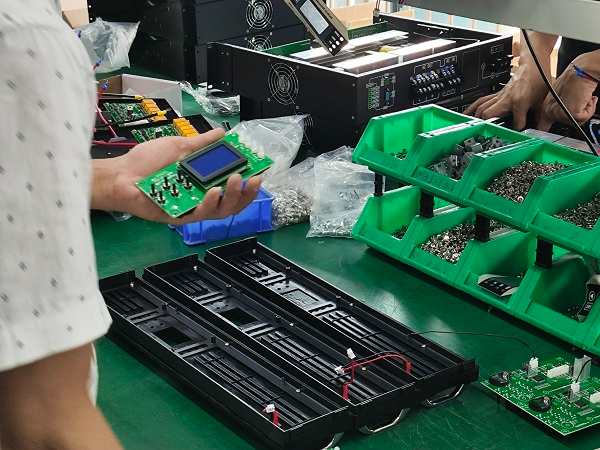
The power inverter (vehicle power supply) is a convenient power converter that can convert DC12V direct current into AC220V alternating current, which is the same as the mains power. It can be used by general electrical appliances.
An inverter must be made up of an inverter device to be called that. It is directly different from a transformer. That is to say, it can realize DC input and then output AC. The working principle is the same as that of a switching power supply, but the oscillation frequency is in Within a certain range, for example, if the frequency is 50HZ, the output is AC 50HZ. An inverter is a device that can change its frequency. How to choose the correct UPS power inverter should mainly pay attention to the following points.
1. Rated output voltage: Within the specified allowable fluctuation range of the input DC voltage, it indicates the rated voltage value that the inverter should be able to output. The stable accuracy of the output rated voltage value generally has the following regulations: During steady-state operation, the voltage fluctuation range should be limited, for example, its deviation shall not exceed ±3% or ±5% of the rated value. In dynamic situations where the load changes suddenly or is affected by other interference factors, the output voltage deviation should not exceed ±8% or ±10% of the rated value.
2. Output voltage imbalance: Under normal operating conditions, the three-phase voltage imbalance (ratio of reverse sequence component to positive sequence component) output by the inverter should not exceed a specified value, generally expressed in %, such as 5 % or 8%.
3. Waveform distortion of the output voltage: When the inverter output voltage is sinusoidal, the maximum allowable waveform distortion (or harmonic content) should be specified. Usually expressed as the total waveform distortion of the output voltage, its value should not exceed 5% (10% is allowed for single-phase output).
4. Rated output frequency The frequency of the inverter output AC voltage should be a relatively stable value, usually the power frequency of 50Hz. The deviation should be within ±1% under normal working conditions.
5. Load power factor: Characterizes the inverter's ability to carry inductive or capacitive loads. Under sine wave conditions, the load power factor is 0.7~0.9 (lag), and the rated value is 0.9.
6. Rated output current: Indicates the rated output current of the inverter within the specified load power factor range. Some inverter products give rated output capacity, expressed in VA or KVA. The rated capacity of the inverter is when the output power factor is 1 (that is, purely resistive load), the rated output voltage is the product of the rated output current.
7. Rated output efficiency: The efficiency of the inverter is the ratio of its output power to the input power under specified working conditions, expressed in %. The efficiency of the inverter at rated output capacity is full load efficiency, and the efficiency at 10% of rated output capacity is low load efficiency.
